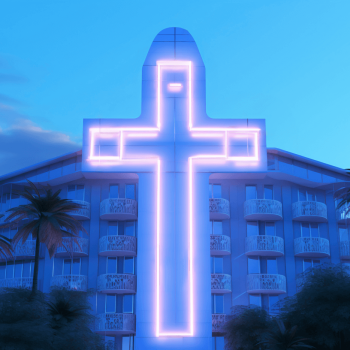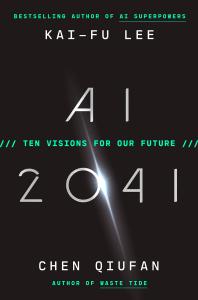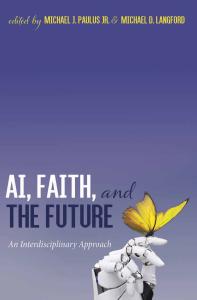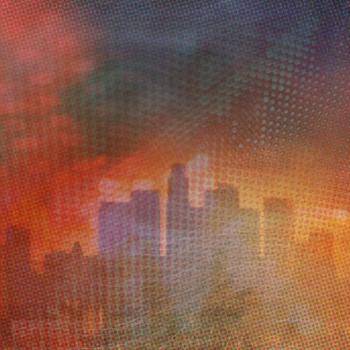About fifty years ago, two very different but oddly related books—from a technological point of view—appeared in America: Jacques Ellul’s The Meaning of the City (1970) and Hunter S. Thompson’s Fear and Loathing in Las Vegas: A Savage Journey to the Heart of the American Dream(1971). Ellul’s book, a theological exploration of the city in the Bible, concludes that the human city is an immoral creation, a depraved “counter-creation” that embraces a false reality and rejects truth. Every city, from the primordial Babel to the eschatological Babylon, is damned. The city, representing both the depravity and glory of technological creativity, cannot be reformed and must be replaced with the City of God, the New Jerusalem that descends from heaven at the end of the book of Revelation.
The Meaning of the City is a theological version of Ellul’s more sociological and substantial book The Technological Society (1964). The argument of both books is that the human technological city has evolved into and with an autonomous force or agency. This “artificial necessity” alienates us from our “natural framework” and encloses us within an “artificial creation” from which there is no exit—we “cannot pierce the shell of technology,” he claims (428f.).
In his introduction to The Technological Society, Robert K. Merton, who gave us the concept of the “self-fulling prophecy”—“a false definition of the situation evoking a new behavior which makes the originally false conception come true”—points out:
We need not agree with Ellul to learn from him. He has given us a provocative book, in the sense that he has provoked us to re-examine our assumptions and to search out the flaws in his own gloomy forecasts (viii).
Which indeed some have done. But after reading some five hundred pages of Ellul’s gloomy definition of the modern technological condition, more have been convinced by Ellul’s technological fatalism. Some of us, however, may not nod all the way through sentences such as this: “In our cities there is no more day or night or heat or cold. But there is overpopulation, thralldom to press and television, total absence of purpose” (429). Thralldom to media, sure, but total absence of purpose? Have all ends truly been lost in technological means?
Ellul is Reformed theologian whose view of total human depravity seems to eclipse a larger view of divine irresistible grace. Had the Technological Society been published after The Meaning of the City, one can imagine a clever editor suggesting a more descriptive title: Fear and Loathing in Bordeaux: A Savage Journey to the Heart of the Technological Society.
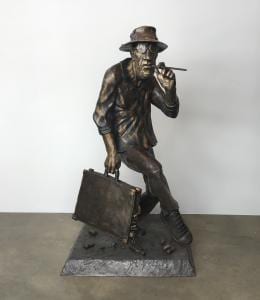
Conversely, one might retitle Thompson’s book as well—as Hope and Longing in Las Vegas. As Ellul was condemning the technological city, Thompson was channeling his own frustrated hopes and longings into his book about America’s failure to become what Abraham Lincoln had pleaded was the “last best hope of earth.” Through the “total subjectivity” of gonzo journalism, in novelistic form Thompson amassed a series of reflections on a desert race, a narcotics convention, the decline of countercultural dreams, and a city of depraved nightmares. Playing with high-tech convertibles, communication devices, pharmaceuticals, and weapons, Thompson found Las Vegas to be a dark mirror of the technological city and worthy of condemnation.
And yet, incredibly, Fear and Loathing in Las Vegasis in some ways is more sober than many of Thompson’s other works. It was an epitaph “for the benevolent drug era of the 60s” that favored “consciousness expansion,” and a lament for the dark turn to the “downers [that] came with Nixon” (202). As his political activism before and after this book reveals, Thompson very much desired and worked for a new polis in spite of his judgment of the present one.
The book of Revelation informed Thompson’s thinking as well as Ellul’s. Both viewed the Apocalypse of John negatively, as a complete condemnation of human depravity and creativity. But while Ellul wholly rejects the human city and the technological society it represents, Thompson’s lament over what Las Vegas represents includes a stubborn affirmation of human creativity. In a wild and weird way, Thompson becomes a better interpreter of the Apocalyptic City, New Jerusalem. For in the end, the glories of Babylon are brought into New Jerusalem.
Ellul can help us understand how technological autonomy can reduce a human being to a token “inserted into a slot machine,” starting an “operation without participating in it” (135). And Thompson, protesting the inhumanity of the machinery of Las Vegas, can help us see that the technological city is not only a dark mirror.




